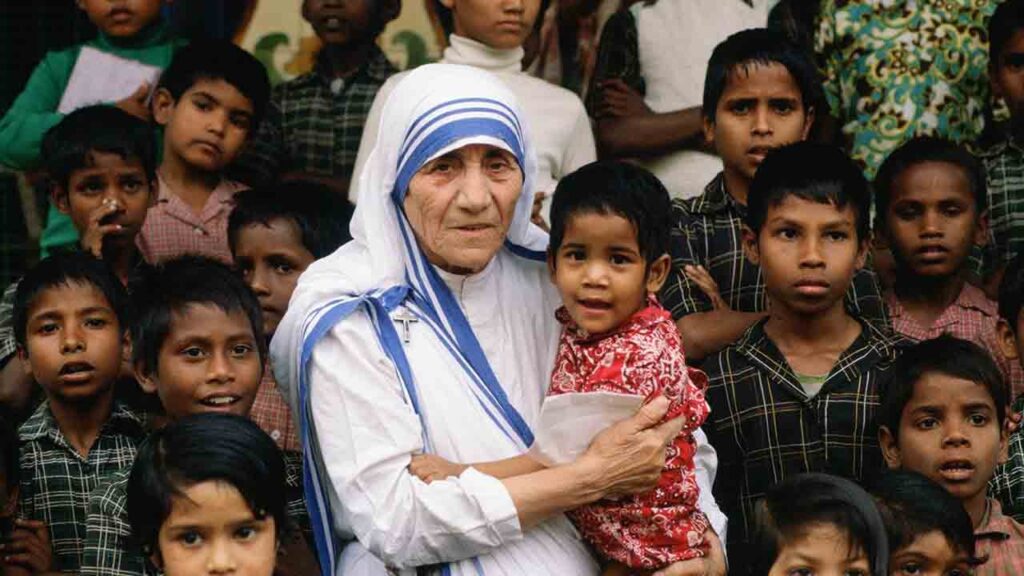Mother Teresa, born Agnes Gonxhe Bojaxhiu, was canonized on September 4, 2016, in a significant event that recognized her extraordinary life and service to humanity. The canonization took place during a solemn Mass led by Pope Francis, who bestowed upon her the title “Saint Teresa of Calcutta.” In his homily, the Pope reflected on her life, stating that Mother Teresa exemplified divine mercy, dedicating herself to the care of all, especially the most vulnerable, including the unborn and those abandoned. He emphasized her commitment to defending life and her profound respect for human dignity, seeing God in every person she served.
The Mass coincided with the eve of the 19th anniversary of Mother Teresa’s death, which occurred on September 5, 1997, at the age of 87. She was born in what is now known as Skopje, North Macedonia, into a family of Albanian descent. As a young girl, she felt called to a life of service and religious dedication, which led her to leave her home at 18 in September 1928 to join the Sisters of Loreto in Ireland. It was during her time in Ireland that she adopted the religious name “Sister Mary Teresa,” named after St. Thérèse of Lisieux.
One year after her arrival in Ireland, she was sent to a mission in India, a country that would forever remain close to her heart. By 1948, she felt the urge to start an independent order, the Missionaries of Charity, which was founded to serve the poorest of the poor. This audacious step changed the course of her life and the lives of countless individuals. She donned a white sari with a blue border, symbolizing her commitment to the poor, and her work began in the slums of Calcutta, where she passionately cared for the sick and dying.
Her mission gained traction rapidly, and in 1950, the Missionaries of Charity was officially approved to operate within Calcutta’s Archdiocese. Through her efforts, the order expanded globally, focusing on the needs of the poorest communities. Mother Teresa famously stated, “By blood, I am Albanian. By citizenship, I am Indian. By faith, I am a Catholic nun. As to my calling, I belong to the world.” This quote encapsulates her universal approach to compassion and charity.
Over the years, Mother Teresa garnered international recognition for her relentless service, which included receiving the Nobel Peace Prize in 1979 for her outstanding efforts in humanitarian aid. Her life embodied the principles of mercy and love, and she provided a powerful example of how one person’s dedication can make a significant impact on the world.
The process of canonization took several steps, beginning with her death in 1997. Typically, five years must pass before the formal investigation into a potential saint’s life commences; however, in this instance, Pope John Paul II waived this requirement, recognizing the urgency of her saintly life. The first stage of canonization involves declaring someone “Venerable,” a title given after the Vatican confirms that the individual led a life of heroic virtue. Following this, attributed miracles must be investigated and approved.
For Mother Teresa’s canonization, two miracles were required. The first miracle occurred in 1998 when an Indian woman named Monica Besra was inexplicably healed from a terminal illness shortly after praying for Mother Teresa’s intercession. The healing, confirmed by medical professionals, led to her beatification in 2003. The second miracle involved a Brazilian man named Marcilio Andrino, who, after slipping into a coma, woke up unexpectedly, leaving his doctors astonished at his recovery. This miracle was recognized by the Vatican in December 2015.
Mother Teresa of Calcutta’s canonization represents not just the official acknowledgment of her sainthood, but also a celebration of her life’s work, which serves as an enduring testament to the power of compassion, humility, and charity in a world often shadowed by suffering. Today, her legacy continues to inspire countless people around the globe, reminding them that, like her, they can be agents of change through acts of love and service.



